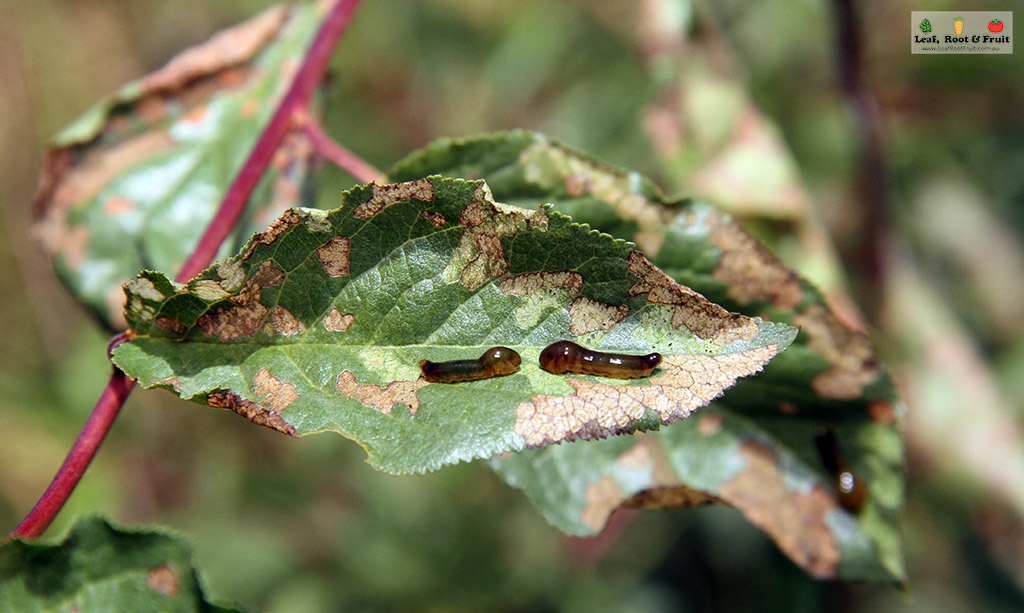
If you are a pear grower, then this slimy little critter is known as a cherry slug. If you are a cherry grower, then you’d call it a pear slug.
They make my tree look an ugly mess
I get asked about managing this orchard pest all the time, mainly because it does make the trees look so incredibly unsightly. Gardeners can’t help but notice them and want to do something.
However, I always volley another question in return.
“Is the tree very productive?”
To which I receive one of two answers.
“Oh yes, the tree is covered in fruit every year,” or less likely, “The tree is only young and hasn’t started producing yet.”
I’ve never really had anyone say “No, the tree isn’t productive at all.” Cherry slugs seem to infest productive trees, and less so, unproductive trees.

So then I need to ask if the slugs are really a problem after all. Isn’t the primary aim of the fruit tree to produce fruit? If it’s doing that in spite of the cherry slug, then is there really a problem?
I would argue there isn’t a problem at all and they may even be beneficial to your tree management regime.
Just another seasonal pest?
Cherry (or pear) slug seem to proliferate in autumn, often after the affected stone or pome fruit have already been picked. At this point, most fruit trees will put on lush growth of new foliage. The autumn break stimulates an abundance of growth. There’s no fruit to divert energy to, so the tree grows leaves instead. It is probably this tender new growth that attracts the sawfly to lay its eggs there in the first place.
I’d argue that all the leaf chewing by the cherry slug at the end of the season reduces the growth of the tree, and this is a good thing. That is, the slugs reduce your pruning requirements and help to keep the tree small (other ways to deliberately keep a fruit tree small are covered here).
Thanks cherry slug!
I don’t care. I don’t like them. How do I control them?
If you have only a small tree, then the best way to deal with them is to squish them (yes I know, it’s gross!).

If you have larger trees then consider dusting them with a powdery substance that desiccates the slugs. Wood ash or a fine builder’s lime are good choices.

Read more about integrating chickens into your backyard orchard here.
As always, a healthy garden ecosystem with plenty of flowering plants (which encourage beneficial insects and predatory birds) will help to restore the balance in no time.
Do you use any control methods for cherry (or pear) slug?


Organic crop protectants product ‘ECO-OIL’ works for me. The slugs can’t cope with anything oily as well as the more common use of powders which are hard to apply under leaves. This year I’m going to try a mix of cooking oil, detergent(tiny bit) and water.
Hi Margot,
Thanks for the tip. As you know, I love a garden experiment, so I’ll be keen to hear how you get on with the cooking oil/detergent mix. It sounds a bit like white oil?
Good luck with the slugs.
Duncan